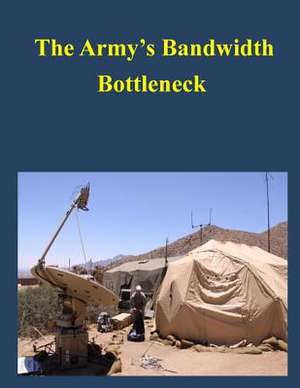The Army's Bandwidth Bottleneck
Autor Congressional Budget Officeen Limba Engleză Paperback
Preț: 95.87 lei
Nou
Puncte Express: 144
Preț estimativ în valută:
18.35€ • 19.04$ • 15.33£
18.35€ • 19.04$ • 15.33£
Carte disponibilă
Livrare economică 24 februarie-10 martie
Preluare comenzi: 021 569.72.76
Specificații
ISBN-13: 9781505315486
ISBN-10: 1505315484
Pagini: 58
Dimensiuni: 216 x 279 x 3 mm
Greutate: 0.16 kg
Editura: CREATESPACE
ISBN-10: 1505315484
Pagini: 58
Dimensiuni: 216 x 279 x 3 mm
Greutate: 0.16 kg
Editura: CREATESPACE
